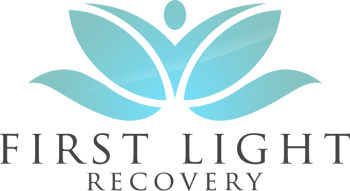Identifying PTSD
When a person has experienced or witnessed a traumatic experience, they have been exposed to an extremely stressful event. This event can include war, a harmful accident, the loss of a loved one, and/or abuse. This event causes such an emotional and physical response that it can last for years. When the trauma produces difficulties for a person to recover, lasting months or years, this may indicate a post-traumatic stress disorder (PTSD) diagnosis.
PTSD Symptoms may include several of the following or all listed below. Every person has a unique experience of events, and symptoms will vary across the categories of intrusion, avoidance, negative changes in thoughts and mood, and changes in arousal and reactivity [1][2].
- Nightmares or sleep disturbances, or Insomnia
- A Flashback/unwanted memories
- Avoidance of certain environments or situations that create reminders or memories of the trauma
- Isolation
- Hypersensitivity / heightened reactions
- Emotional detachment
- Anxiety, fear, and mistrust
- Depressed mood and negative self-talk or loss of interest in usually pleasurable activities
- Guilt and Shame
- Self-destructive behavior, hypervigilance, or agitation
Risk factors that may increase the likelihood a person will develop PTSD from a traumatic event is having lack of social support following the event, previous trauma exposures, having a stressful work environment, personal or family history of mental health issues, and history of substance abuse [1][2].
PTSD Triggers
PTSD triggers can be any cognitive, emotional, social, or environmental reminder of the traumatic event that sends a person into a fight, flee, or freeze response; a person’s body triggers that danger is present or near. This hypersensitivity is “triggered” by sounds, smells, tastes, sights, situations, anniversaries, words read or heard, and even thoughts or emotions that serve as a reminder.
The thing is, a person may feel the relief of symptoms and experience recovery, not having a trigger for some time, then what feels out of nowhere, a triggering event, person, or thing brings back an arousal response [4].
How to Deal with PTSD Triggers
The first suggested area to begin is recognizing trauma triggers. You can create a hierarchy of activities, events, and situations and rate it on a determined distress scale from mild to severe, adding to the hierarchy as triggers arise. This list may need to be done in a supportive environment with a clinical professional such as a therapist. When working with a therapist this hierarchy can be used in exposure interventions. Exposure activities need to be done safely, have a controllable environment, be specific, and available to be repeated [4].
Cognitive Behavioral Therapy (CBT) is commonly used, long-lasting and noticeable results in six to twenty-four sessions. CBT works to identify and challenge maladaptive thinking patterns that contribute to symptoms [4].
Additional evidenced based behavioral health treatment include narrative therapy, and eye movement desensitization and reprocessing (EMDR therapy). Group therapy and support groups are also recognized to be highly affective. Psychotropic medication management with a physician can also aid in recovery, specifically with antidepressants [1][4].
Outside of working with clinical professionals, there are lifestyle changes that can be put in place to lower occurrences of triggers. This includes evaluating and strengthening a positive support system within family members, friends, and/or support groups. Abstain from drugs and alcohol. Using substances can enhance emotional and physical arousals and increase depression and anxiety. Include positive mind and body practices such as exercise, mindfulness practices like journaling or spending time in nature, and meditation or grounding exercises. Practicing grounding can help as a reactive coping strategy during times of trauma trigger surprises [4].
Best practice is to have many tools in your toolbox of coping skills when dealing with PTSD triggers. Here are some more to try out [5]:
- The “Window of Tolerance” – this includes developing self-awareness of positive and negative states to allow for realistic expectations and the use of coping tools, so to know what you can handle and what you cannot.
- Breathe Slowly and Deeply – breathing through your nose and out of your mouth with intension. The suggested rate is to inhale for four counts, hold for two, and exhale for six.
- Validate your Experience
- Focus on your Five Senses – practice a state of mindfulness by paying attention to five things you can see, four things you can feel, three things you can hear, two things you can smell, and one thing you can taste. This helps bring you/ground you to the present moment, in turn lowering a distressful response.
- Think Positively for 12 Seconds
- Use a Gravity or Weighted Blanket
- Laugh
Suggested interventions, tools, and coping are meant for practice, not mastery. Practice promotes proactive coping and will help reduce symptoms and aid in management. Trauma is not an experience that goes away. It’s something that stays with you, but it does not have to control you. Many roads to recovery create emotional and cognitive strengths, self-awareness, and in turn promotes healthy relationships with others.
PTSD Treatment in Orange County
First Light Recovery is a residential mental health facility in Orange County, California. If you or a loved one suffers from Post-Traumatic Stress Disorder, call us at 949-326-3658.
Resources:
- https://www.verywellmind.com/ptsd-in-the-dsm-5-2797324
- https://www.mayoclinic.org/diseases-conditions/post-traumatic-stress-disorder/symptoms-causes/syc-20355967
- https://www.webmd.com/mental-health/what-are-ptsd-triggers#:~:text=Triggers%20can%20include%20sights%2C%20sounds,sky%20might%20make%20you%20upset.
- https://www.therapistaid.com/search?query=ptsd&page=1
- https://www.nami.org/Blogs/NAMI-Blog/October-2020/7-Tools-for-Managing-Traumatic-Stress




